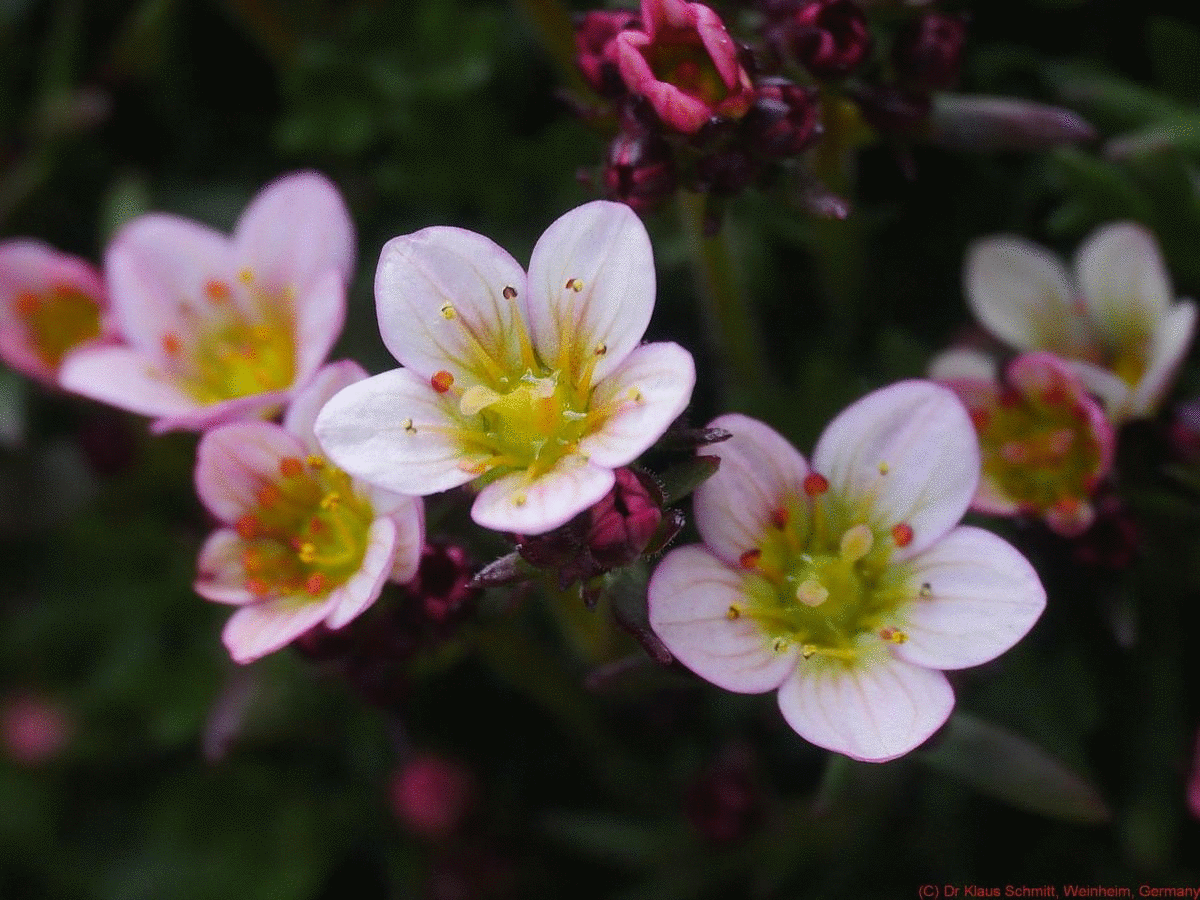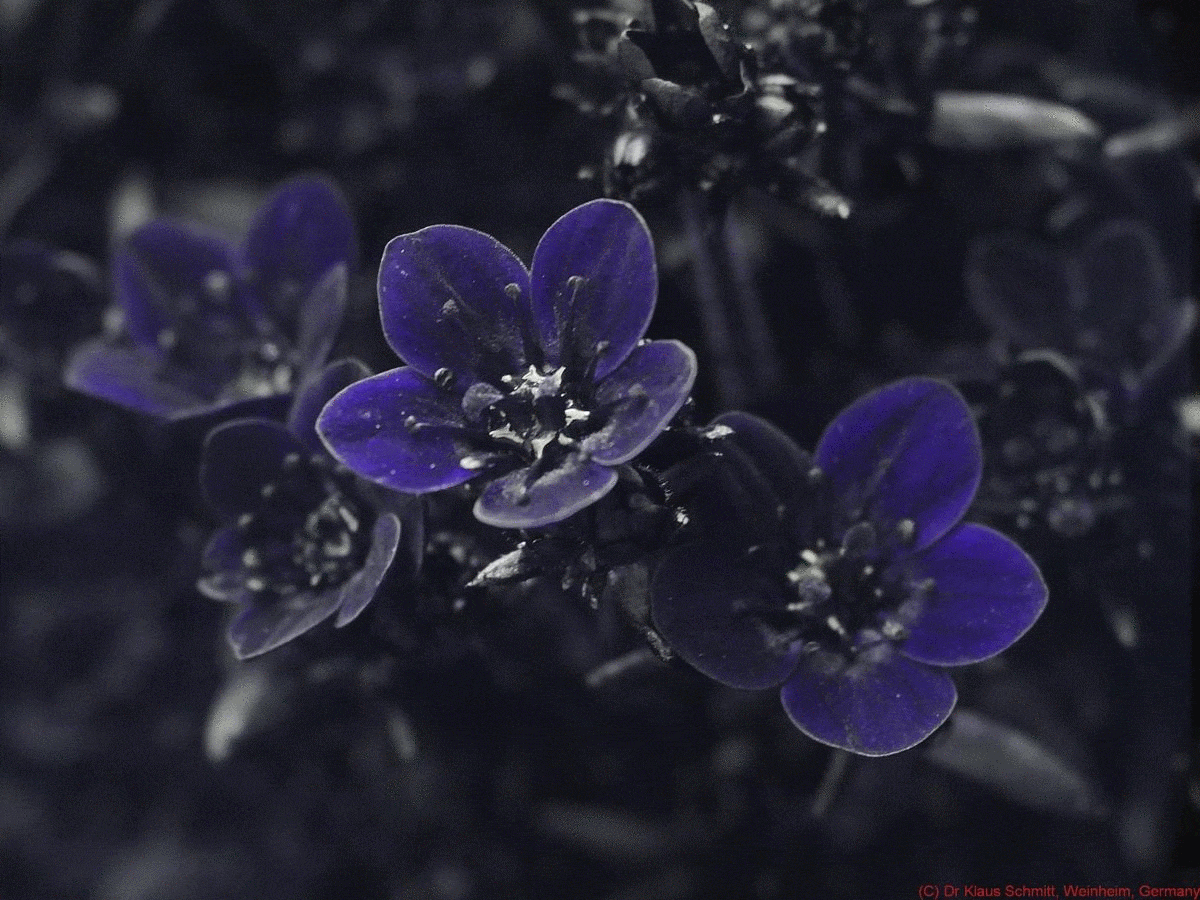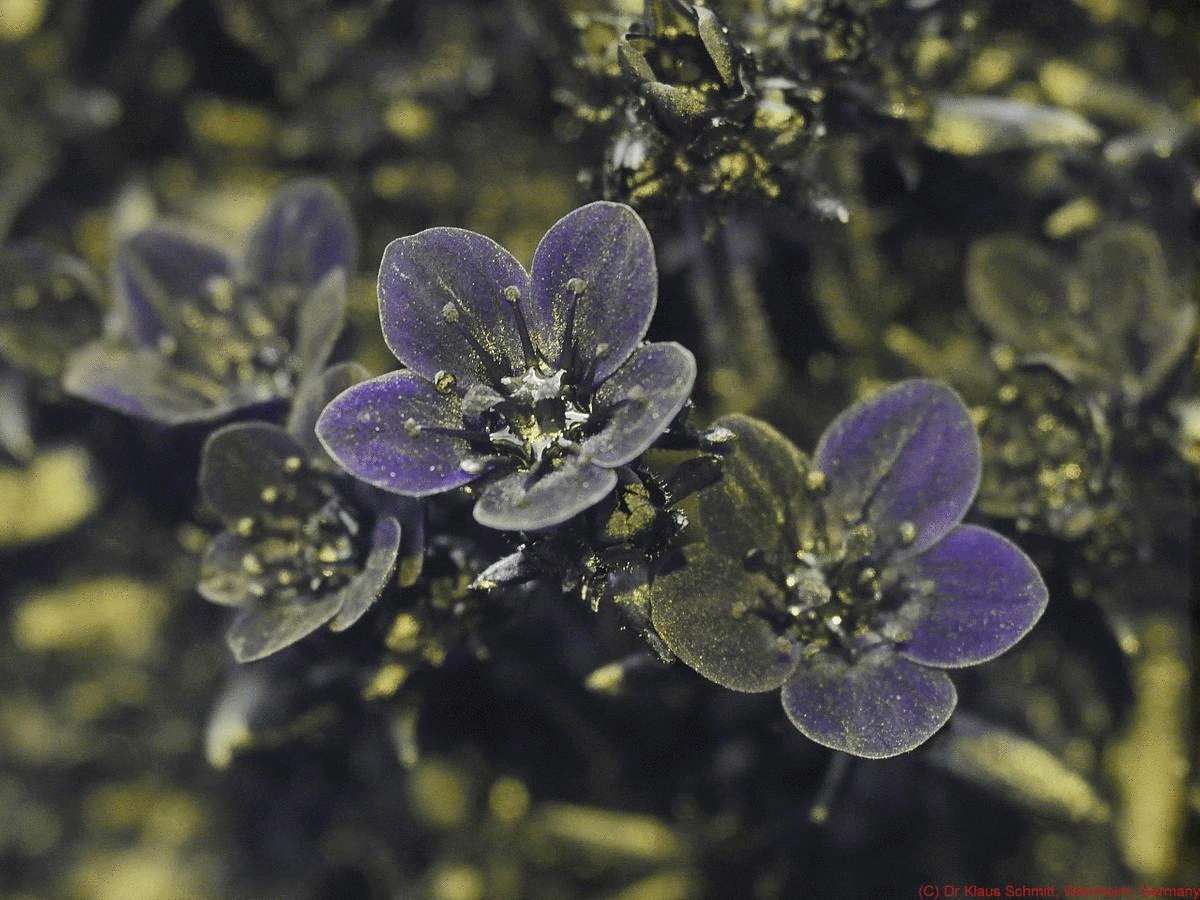Dr Klaus Schmitt
Well-known member
Here a white Saxifraga flowers), which shows the predicted effect my friend told me about: That bees have around their eyes sensors able to detect polarized light and there woud be flowers using that:
Visible light - sunlight:

Reflected polarized UV, only sunlight:

Reflected polarized UV, using a 365nm UV LED:

Visible light - sunlight:

Reflected polarized UV, only sunlight:

Reflected polarized UV, using a 365nm UV LED:

